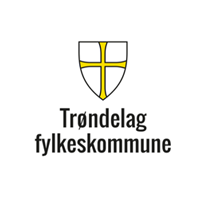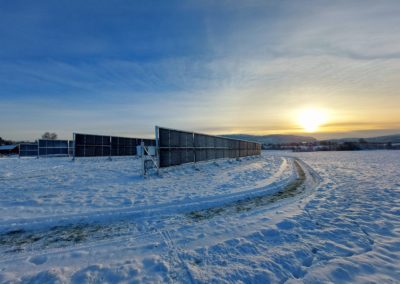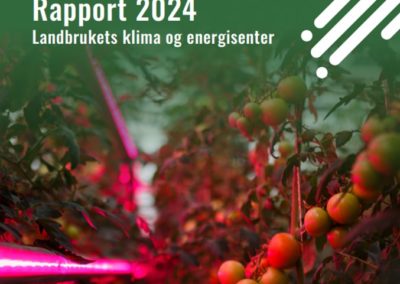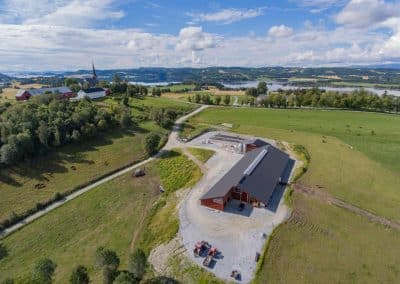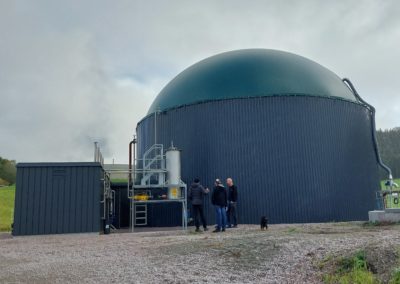At Mære, three solar cell systems have been installed on the roof; the suckling cowshed, the dormitories and the stables. The facility at the suckling cow barn is a roof-integrated facility. The solar cells form an integral part of the roof itself. In the dormitories, the solar cells are placed on top of the existing roof. The system at the dormitories is designed to produce an annual electricity production of 55,000 kWh. In 2019, the plant produced just over 50,000 kWh. Overview of production throughout the year varied from 11.5 kWh in January, to the best month in April with a production of 9,000 kWh. The system at the dairy cow barn is calculated to be able to produce an annual production of 34,500 kWh. In 2019, the plant produced 24,680 kWh. The variation throughout the year varied from 6.22 kWh in January and up to 4,250 kWh in April, which was also the month with the largest production.
A solar cell system has been installed at the stables with an estimated annual production of 31,600 kWh. There are also plans to install facilities on the roof of the new milk barn. This is calculated to be able to provide an annual production of 29,000 kWh. In sum for all the facilities, this will give an annual potential production of 150,000 kWh.
Most of the electricity produced in the two plants is used directly at the school. What is not consumed goes into the transmission network. It is most profitable to use the electricity itself locally. Storage in batteries or e.g. in hot water during periods of excess may become more relevant over time.
The total cost of installing solar cells on the roof varies greatly depending on which solution is chosen and whether additional roof work is required.
The repayment period for such an investment will often extend up to ten to fifteen years, and in some cases even longer. The lifetime of a solar cell system is from 30-40 years. The efficiency will decrease somewhat over time. The production of electrical energy in a solar cell plant is greatest on sunny days. Energy production is not dependent on hot days - it is relatively greater on cold days with a lot of solar radiation (March-April).
The facility at the lactating cow shed at Mære agricultural school
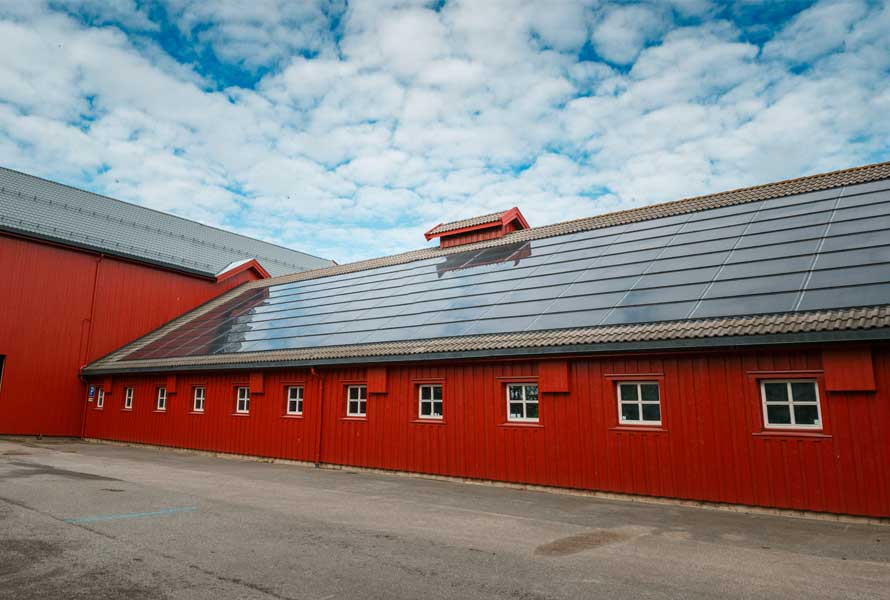
Solar cells convert solar energy directly into electrical energy. The energy can be used directly in electrical appliances, stored in batteries, or transported to the consumer via the transmission network. Local production of electrical energy has become more interesting as the energy demand increases and the transmission network is not developed to take the energy peaks that are coming. Domestic production of electrical energy can also at times be too low in relation to consumption. In periods, a good deal of electricity is already imported into Norway. Local production of electrical energy from the sun is a good climate measure rather than importing electricity that can be produced in coal-fired or oil-fired power plants abroad.
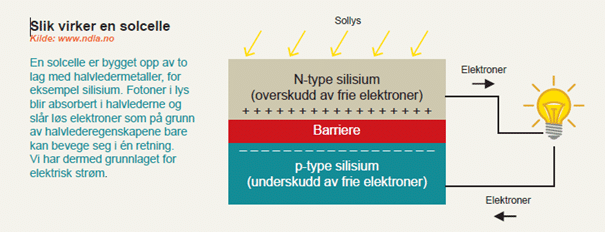
NTE and Norsk Landbruksrådgiving joined us at an online meeting about solar cells and solar energy in June 2020. At this online meeting you can learn more about what you should think about when using barn roofs for solar energy production. You will also learn more about how the thermal storage at Mære works.
Facts about the facility in the dormitory building:
Installed power: 58.3 KW
Expected annual production: 55,000 KWh
Solar panel: Solitek Standard p60-270W
Facts about the facility at the suckling cow barn:
Roof-integrated plant with "Power optmizers", which optimizes production and raises the safety level of the plant
The system is connected to a fire alarm and SD system
Number of panels: 120
Total output: 34.8 kW
Area: 192 m2
Expected annual energy production: 34,500 kWh

